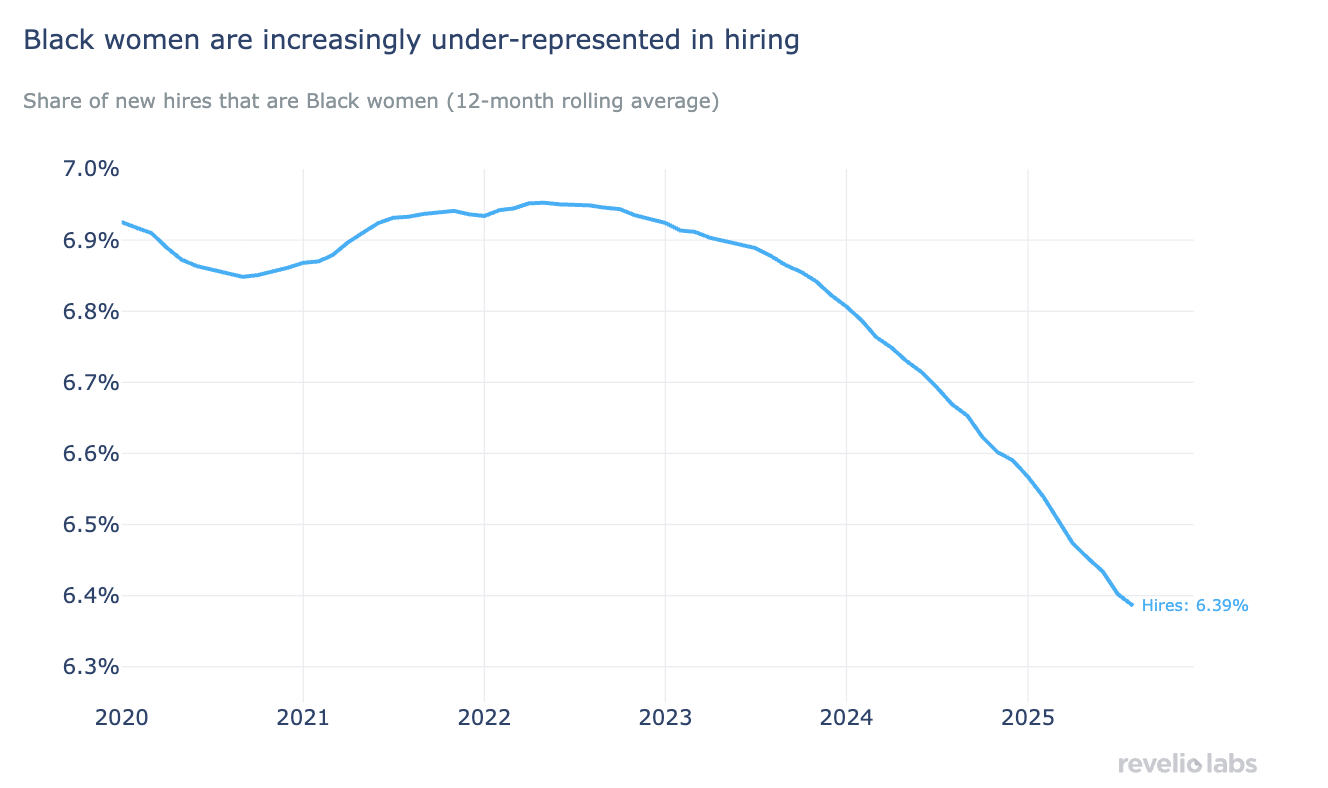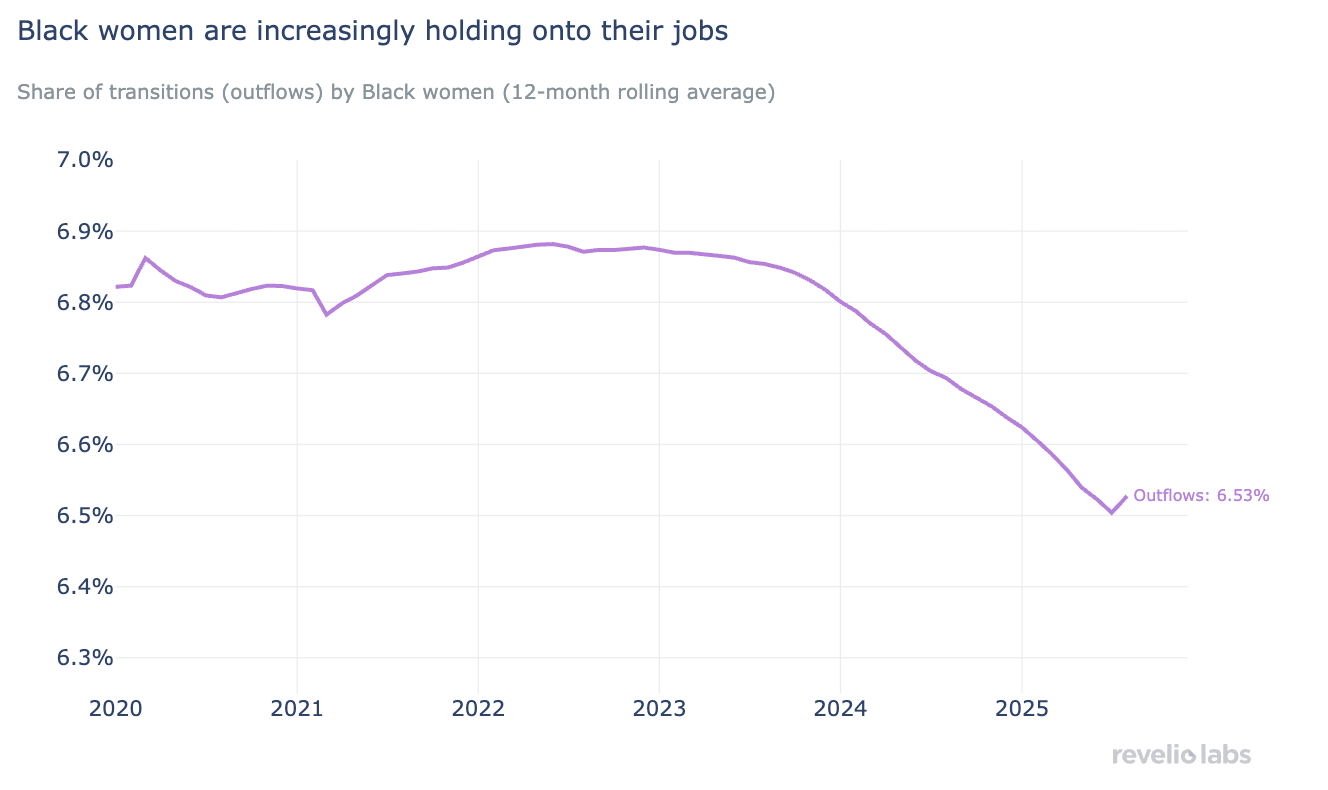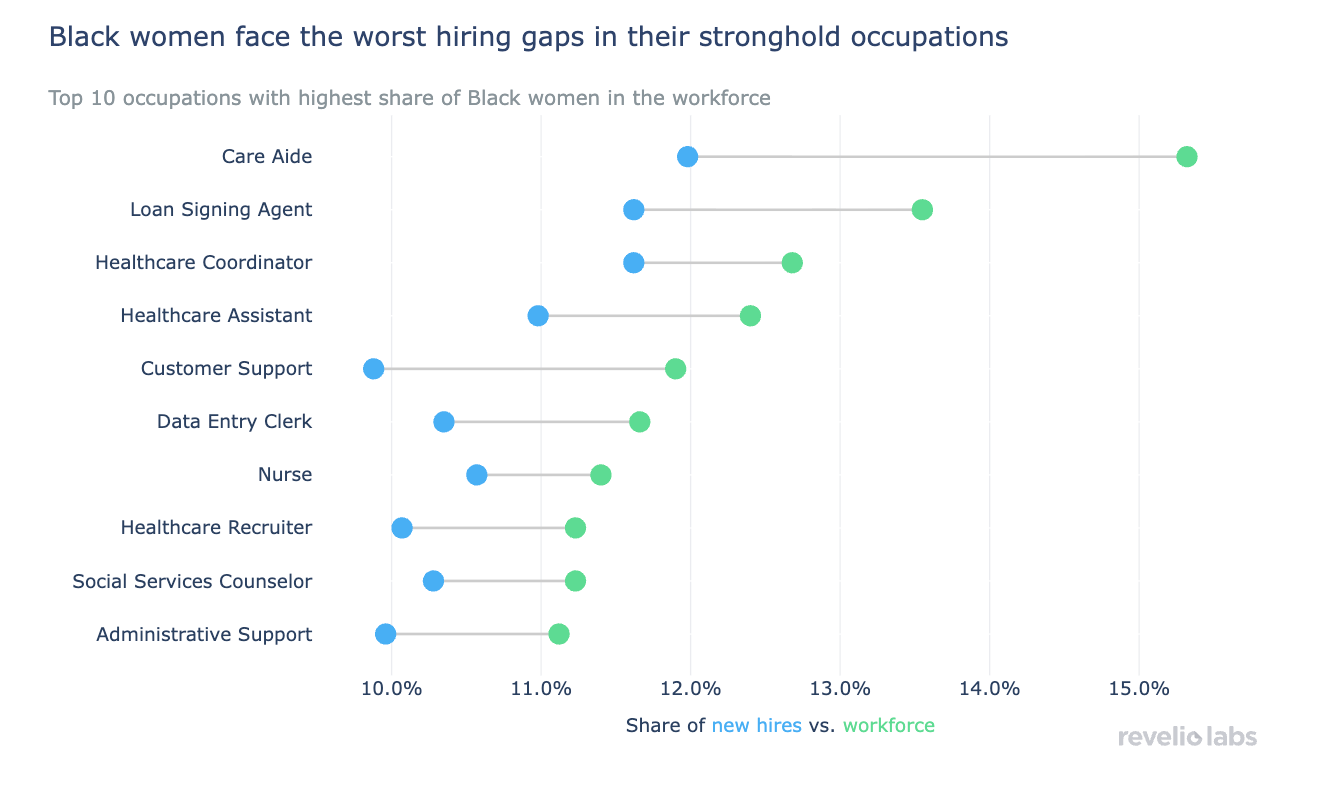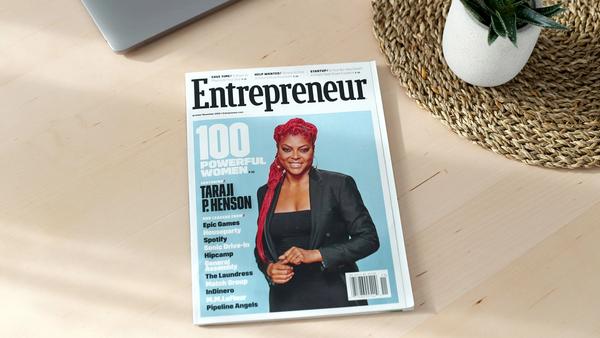When Hiring Weakens, Black Women Bear the Brunt
Even in their most commonly held jobs, Black women face barriers

Black women's share of new hires has declined from 6.9% to 6.4% since 2020, a trend that signals a decline in future representation.
In response to declining opportunities, Black women are increasingly holding onto their jobs, with their share of workforce departures falling from 6.9% to 6.5%.
In occupations where Black women are most represented, they are systematically under-hired—care aides hire at only 12.1% despite being 15.3% Black women.
As the labor market cools, the slowdown is not landing evenly. Our data shows Black women’s share of new hires has slipped, down about half a percentage point since 2023, while their share of exits has also fallen. This can be viewed as a sign of “job hugging” as opportunities narrow. Economic downturns typically hit marginalized workers the hardest, and this cooling appears to be no exception, with particularly acute hiring gaps in the care and service roles where Black women are most concentrated.
Looking at the longer trend reveals the full scope of this shift. Since 2020, Black women's hiring share has steadily declined, falling from roughly 6.9% to 6.4% today. While this decrease may seem small, it represents tens of thousands of missed opportunities annually. The gap has widened particularly since 2023, suggesting that without intervention, Black women's workforce representation will inevitably decline in the coming years.


Black women's share of workforce departures has also declined, falling from 6.87% to 6.53% since 2020. This pattern of holding onto existing jobs longer coincides with the declining hiring rates, suggesting reduced workforce mobility. The combination of falling hiring rates and falling departure rates creates a concerning picture: Black women face both fewer opportunities to enter new positions and lower rates of job transitions, effectively constraining their career mobility from both directions.


Most concerning is what happens within occupations where Black women are most concentrated. Care aides are 15.3% Black women but only 12.1% of new hires. Healthcare assistants show similar gaps, as do customer support roles and administrative positions. These positions are predominantly low-wage, with median salaries ranging from $25.6K for administrative support to $44.6K for healthcare coordinators. The systematic under-hiring is clear: across the board, Black women face barriers to entry even in fields where they have historically found employment.


These patterns reveal a workforce system that constrains Black women from both directions. They face under-hiring in professional and technical roles, where they comprise 6.8% of workers but only 6.1% of new hires, while simultaneously experiencing even greater barriers in care and service sectors, where they've traditionally worked. The data suggests a narrowing of opportunities across multiple sectors. As healthcare and service industries continue to grow, these hiring disparities may have broader implications for both workforce diversity and sector capacity. For employers tracking diversity metrics, the divergence between stable representation numbers and declining hiring shares highlights the importance of monitoring not just current workforce composition, but also hiring trends that shape future representation.


